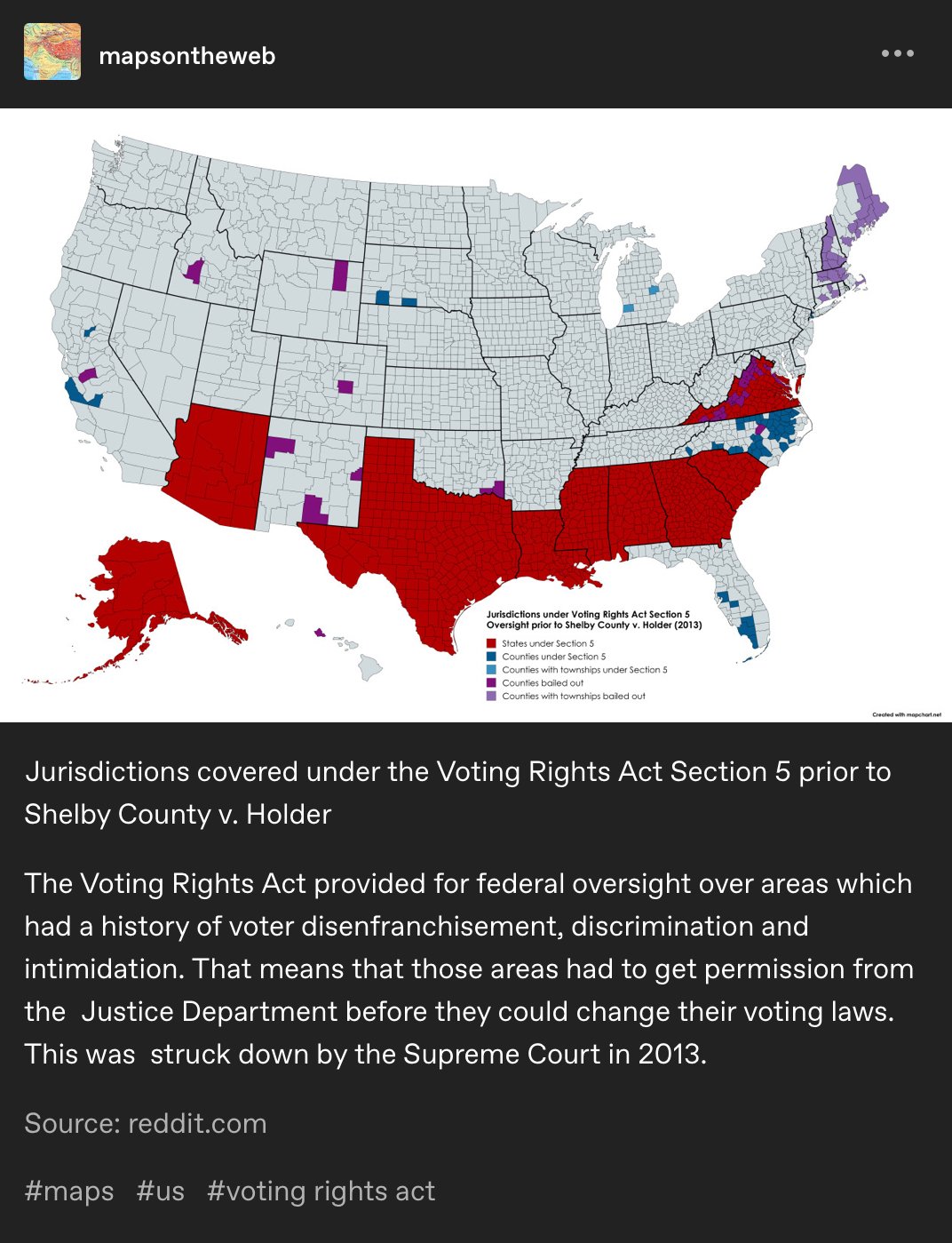Within a year of the decision Texas implemented discrimatory voting laws, proving that the federal oversight really was necessary.
Map Enthusiasts
For the map enthused!
Rules:
-
post relevant content: interesting, informative, and/or pretty maps
-
be nice
What was the content of the discriminatory voting laws?
Within hours of a U.S. Supreme Court decision dismantling a key provision of the Voting Rights Act, Texas lawmakers announced plans to implement a strict voter ID law that had been blocked by a federal court. Lawmakers in Alabama said they would press forward with a similar law that had been on hold.
Voter ID laws for voting are discriminatory in practice in the US, especially in southern states for a mulitide of reasons including barriers to getting the IDs, easily losing them due to discriminatory law enforcement, and many minorities not getting them for other reasons.
voter ID is not discriminatory
Yes, voting ID requirements in the US are discriminatory.
https://www.lwv.org/blog/whats-so-bad-about-voter-id-laws
Restrictive voting measures are designed to maintain the power structures that benefit those in control — largely white legislators — and their legacy is still felt today.
For example, Texas didn’t even sleep on it — they moved to introduce a strict voter ID law at midnight after the Supreme Court decision was handed down in 2013. That law resulted in the ineligibility of an estimated 608,470 registered voters in Texas, representing a total of about 4.5% of registered voters in the state at the time.
Other countries with universal and easily obtained IDs might not have the same outcomes, but in the US the ID requirement for voting only exists to suppress minority voting. You can find a lot of sources on how it works, but keep in mind that at the same time states added the ID requirement they also made it harder to obtain an ID.
The idea that voter ID laws are pro-white-hegemony is basically racist.
That law resulted in the ineligibility of an estimated 608,470 registered voters in Texas, representing a total of about 4.5% of registered voters in the state at the time.
How did these people register to vote without ID? How, if IDs aren’t checked in that process, do we know some of those people weren’t registered twice or more?
